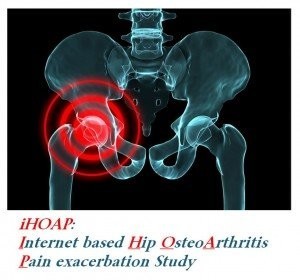Osteoarthritis (OA) is an increasingly common problem in our community and is one of the leading causes of disability among older adults.
The disease develops over time and most commonly affects the knees, hips and hands, and less commonly the shoulder, spine, ankles and feet.
The physical and emotional effect of osteoarthritis can have a major impact on life. Common symptoms include pain, stiffness and loss of function in the affected joint and for many these symptoms can make everyday activities such as using stairs or getting in and out of a car difficult.
Here are a number of modifiable and non-modifiable factors that influence the onset and progression of osteoarthritis.
Modifiable Factors:
Weight:
While not everyone who has osteoarthritis is overweight, being overweight is a great risk factor for the development and progression of osteoarthritis. The knees, hips and back bear the physical load of the body during movement. Carrying excess weight creates an abnormal load for these joints and can overwhelm the joints capacity for self-repair.
Muscle Strength:
Muscles support joints from both above and below, and when muscle strength is diminished, greater pressure is placed on the joint itself. When muscles are strong and working effectively they help stabilise the joints, improve balance, confidence and the ability to be physically active.
Non-Modifiable Factors:
Age:
Growth hormones are necessary for cartilage turnover and repair. With age, growth hormones are reduced and the body loses its ability to repair cartilage.
Gender:
After the age of 55, women are twice as likely to develop OA, particularly of the hand and knee.
Genetics:
Evidence suggests that half of the risk of developing osteoarthritis of the hands and, hips can be attributed to genetic factors responsible for the make-up of cartilage and bone. However it is likely that genes determining joint shape, muscle strength and body weight will also have important roles.
Ethnic groups:
Generally speaking, osteoarthritis is prevalent in all ethnic groups however rates are lower in places with low obesity rates like China.
OA Management
For some people with osteoarthritis, everyday tasks such as washing, dressing, cooking and shopping can become difficult. Osteoarthritis is a joint disease that can have consequences which impact our lifestyles greatly. For this reason it is important to assess each person individually for the management for osteoarthritis, so as to ensure that the areas of daily life that is most affected can be addressed.
Like other chronic diseases, there is no sole treatment or cure. Instead there are several strategies that can help manage the condition.
For more information about osteoarthritis visit www.myjointpain.org.au
Help doctors to better understand Osteoarthritis by participating in research
People with hip osteoarthritis are invited to take part in Internet-based Hip Osteoarthritis Pain Exacerbation (iHOAP) study, conducted by the Institute of Bone and Joint Research at the University of Sydney along with the Centre for Health, Exercise and Sports Medicine (CHESM) at the Department of Physiotherapy, University of Melbourne to help researchers determine the factors that influence your level of hip pain (e.g. weather, physical activity, foot-wear, hip injury, etc.).
To find out more information and to register, go to www.ihoapstudy.info.
